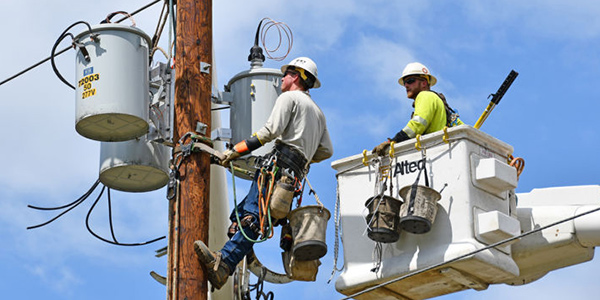Ensuring access to testing and personal protective equipment (PPE) for frontline workers is one of the key challenges to reliable operation of the electric grid during the COVID-19 pandemic, according to a new report from NERC.
The ERO produced the Pandemic Preparedness and Operational Assessment — Spring 2020 as a “bridge” to the 2020 Summer Reliability Assessment, currently under development by the Reliability Assessment Subcommittee (RAS). (See RAS Balancing COVID-19 Impacts in Reliability Report.) Although that report will examine the reliability impact of the coronavirus outbreak, the organization felt the industry would benefit from a separate report focused only on the pandemic and its implications for the bulk power system.
In a media briefing this week, NERC staff noted that the report identified no “specific threats or degradations” to the operation of the BPS at this time. However, while this does give utilities some breathing room, industry still must “[prepare] to operate with a significantly smaller workforce, an encumbered supply chain and limited support services for an extended and unknown period of time.”
Work Force Shortages Expected
Staffing burdens represent the fundamental risk posed by the pandemic: In NERC’s view, the greatest danger is that utilities will lose the trained workers that keep distribution, transmission and generation facilities operating to illness.
While the industry can mitigate the risk by ordering some employees to work from home, many functions — whether in control rooms or in the field — cannot be performed remotely. Because these workers must perform their jobs in person, the question becomes how to reduce the danger that an infected person will unknowingly spread the virus to others on the job.
Utilities are mitigating this risk by restricting nonessential visitors from control rooms; removing unused equipment and furniture to limit surfaces where the virus can incubate; revising operating rules to create more distance between personnel; and requiring mandatory temperature screenings. An essential element of the response is regularly testing employees for the virus so that those who are infected can be isolated from others; however, the ongoing shortage of testing kits makes this a complicated proposition.
“The industry is taking an all-of-the-above approach to testing and working very closely with the Department of Energy, [Department of Homeland Security] and [Department of Health and Human Services] on prioritizing those very critical, hard-to-replace workers,” said Matthew Duncan, senior manager of resilience and policy coordination for the Electricity Information Sharing and Analysis Center. “Those efforts are starting to bear some fruit, but it’s still something that we’re going to continue to push for at both the federal and state levels.”
Shortages of PPE represent another potential danger for essential workers as utilities and health care providers struggle to fairly allocate limited resources. The report noted that some utilities have been able to effectively negotiate for supplies but warned that maintaining adequate PPE stocks remains a challenge for many entities and could be an issue in future epidemics as well.
Cybersecurity, DER Risks Highlighted
Cybersecurity is also a concern. The expanded remote workforce is an attractive “attack surface” for malicious actors who may try to exploit employees distracted from best practices by family or personal challenges, Duncan said.
NERC urged utilities to use the E-ISAC and the Cybersecurity Risk Information Sharing Program to stay abreast of the latest threats.
In addition, John Moura, NERC’s director of reliability assessment and performance analysis, warned that the closing of commercial and manufacturing customers has led to significantly lightened loads in many regions. In areas with high penetration of distributed energy resources, these reduced loads may mean DERs serve a significantly larger portion of overall load than anticipated by grid planners — an issue that is already causing concern among some utilities. (See Rooftop PV’s ‘Hidden Loads’ Challenge Grid Planners.) Load forecasting models will have to be recalibrated to address this change.
Although the grid has continued to function well in the face of COVID-19, NERC emphasized that adjusting to the reality of the pandemic has just begun. Additional efforts will be needed to grapple with new challenges as they emerge.
“I think it’s important to note that while health care workers are working to flatten the curve, the electricity industry is staying ahead of the curve as it relates to the challenges [of] COVID-19,” Duncan said.




